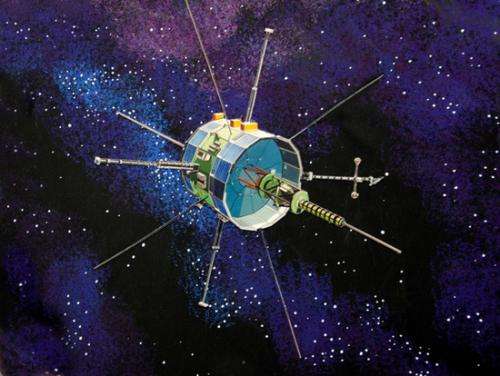ISEE-3 comes to visit Earth

(Phys.org) —It launched in 1978. It was the first satellite to study the constant flow of solar wind streaming toward Earth from a stable orbit point between our planet and the sun known as the Lagrangian 1, or L1. Monitoring that wind helped scientists better understand the interconnected sun-Earth system, which at its most turbulent can affect satellites around Earth.
In 1984, it was given a new mission and called the International Cometary Explorer. In September 1985, it passed directly through the tail of Comet Giacobini-Zinner, making it the first spacecraft to encounter and gather data from a comet. It also went on to fly by Comet Halley in March 1986. From 1991 until 1997, when it was too far away for reliable communications, this satellite continued to investigate the sun. Now it's coming home to visit - making its closest approach to Earth in August 2014 before it heads back out to interplanetary space.
This is the story of NASA's and the European Space Agency's International Sun-Earth Explorer (ISEE-3). Beacon signals from the spacecraft's communications system demonstrate that it is still operating, but scientists and engineers don't know how well. This beacon is also how they know the spacecraft is still following the same orbit around the sun, moving slightly faster than Earth.
The ISEE-3 mission was state-of-the-art when it launched. It used an S-band frequency, part of the microwave band of electromagnetic waves, for communication. At the time, this frequency was reserved for government air and space communications. Today, the S-band once used for ISEE-3 is outmoded. Solar wind data that ISEE-3 gathered at the rate of once every 40 minutes has been replaced by spacecraft with instruments that are 10,000 times faster.
ISEE-3 opened new pathways for scientific exploration. Although overtaken by advances in technology, ISEE-3 remains a testament to the scientists and engineers who conceived, launched and managed this versatile, old spacecraft.
Today, some citizen scientists are investigating whether it would be feasible to communicate with ISEE-3 for the first time in almost two decades in order to send commands to return it to L1. A daunting prospect after all this time with NASA's old friend.
Provided by NASA





















